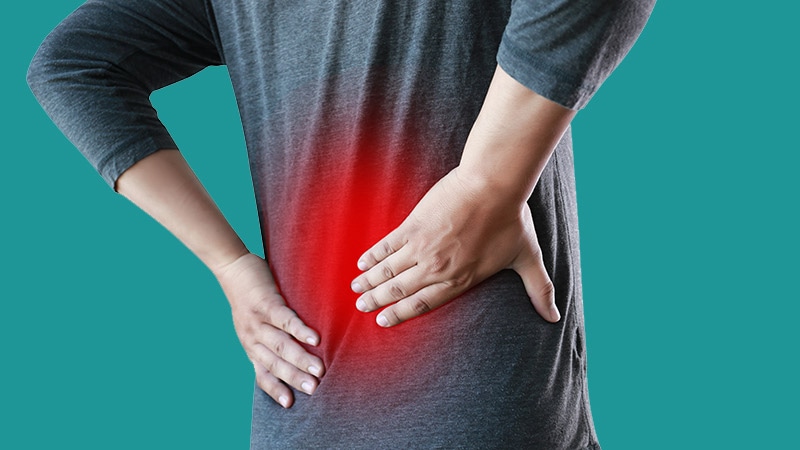Regular walking can help prevent recurrent episodes of low back pain, a new study suggests.
Among adults who recently recovered from an episode of low back pain, those who participated in an individualized walking program had fewer repeat episodes of low back pain and went longer before a recurrence than peers in a control group, the authors found.
The Australian WalkBack program was also “cost-effective, where most of the savings came from reduced time off work and we also saw a significant reduction in low back pain that required care-seeking,” lead author Natasha Pocovi, PhD, Department of Health Sciences Macquarie University, Sydney, told Medscape Medical News.
The study was published online on June 19 in The Lancet.
Common and Disabling
Low back pain is common and often disabling. About 7 in 10 people who recover from an episode of low back pain will experience a recurrence within the following year.
Exercise is recommended to prevent recurrent bouts, but the effectiveness and cost-effectiveness of an accessible and low-cost intervention such as walking remains to be established.
The WalkBack trial enrolled 701 adults (mean age, 54 years; 81% women) who had recently recovered from an episode of low back pain. They had a median of 33 previous episodes of low back pain and were thought to be at high risk for recurrence over the next 12 months.
Half were randomly allocated to an individualized, progressive walking program with six physiotherapist-guided education sessions over 6 months and half to a no-treatment control group.
The trial was conducted at 25 private physiotherapy clinics across Australia. Participating physiotherapists completed 3 hours of online training in health coaching.
A guiding target for the intervention group was to walk 5 times per week for at least 30 minutes daily by 6 months, although the program was individualized as appropriate. Participants’ diaries showed that the median times walked per week by the intervention group was three times in week 1 and four times in week 12.
Walking + Education = Benefit
The walking intervention was effective in preventing an episode of activity-limiting low back pain (hazard ratio, 0.72; P = .0002). The median days to a recurrence was longer among intervention participants than control participants (208 days vs 112 days).
The incremental cost per quality-adjusted life-year gained was $7802 AUD (around $5201 USD), “giving a 94% probability that the intervention was cost-effective compared with a no-treatment control at a willingness-to-pay threshold of $28,000,” the authors reported.
The total number of adverse events was similar across groups. However, the intervention group reported about twice as many lower-extremity injuries than were observed in the control group (100 vs 54).
Pocovi told Medscape Medical News that it’s tough to tease out which elements of the WalkBack intervention contributed most to preventing low back pain, given the multifaceted nature of the program.
“Our study looked at a combination of walking and education delivered by a physiotherapist who was up-skilled in health coaching,” Pocovi explained.
“The benefits of walking could have been from the gentle movements, loading and strengthening of the spinal structures and muscles, the relaxation and stress relief it provides, and the release of feel-good endorphins,” Pocovi said.
The education provided by the physiotherapist aimed to give people a better understanding of pain, reduce fear associated with exercise and movement, and give people the confidence to manage their pain could also factor in.
“It’s likely a combination of these,” Pocovi said.
An “interesting question” is whether patients would get the same benefits by adopting a walking program on their own, Pocovi said.
“It’s possible that some patients might be able to develop their own program and motivate themselves; however, many people in our trial said they require (and valued) the support of a clinician to develop and progress their program and help keep them on track and accountable. In addition, the education provided might be very important for some patients and will be best delivered by a healthcare clinician,” Pocovi said.
Valuable Contribution, With Caveats
The WalkBack trial represents a “valuable contribution to a neglected area of back pain care and prevention of recurrence,” two UK-based physiotherapists who wrote an accompanying editorial.
“However, offering six physiotherapy appointments to asymptomatic people is unlikely to be taken up by payers or health-service commissioners within increasingly resource-constrained settings,” Diarmuid Denneny with Brunel University London, Uxbridge, England, and Jackie Walumbe, with University of Oxford, England, wrote.
“By design, preventive interventions need to ensure population coverage to be effective. It is unlikely that the existing health-care workforce (physiotherapists) have this capacity and therefore alternative providers (eg, social prescribers, exercise professionals, and digital offers) should be explored,” they noted.
Denneny and Walumbe also pointed out that most of the participants in the study were well-educated and in at least good general health and that no data on ethnicity were provided.
“Further work evaluating this intervention with broader and diverse populations, where people with comorbidities and those experiencing socioeconomic deprivation are included, is necessary to evaluate real-world application and outcomes,” they wrote.
Funding for the trial was provided by the National Health and Medical Research Council. The authors have no relevant conflicts of interest. Denneny reports consulting fees from Live Well with Pain and Leva Clinic; a grant from the Chartered Society of Physiotherapy; and was a Committee member representing physiotherapy on the National Institute for Health and Care Excellence guideline committee NG193. Walumbe reports travel support from the Chartered Society of Physiotherapy Charitable Trust and is a past co-chair of the Physiotherapy Pain Association.

